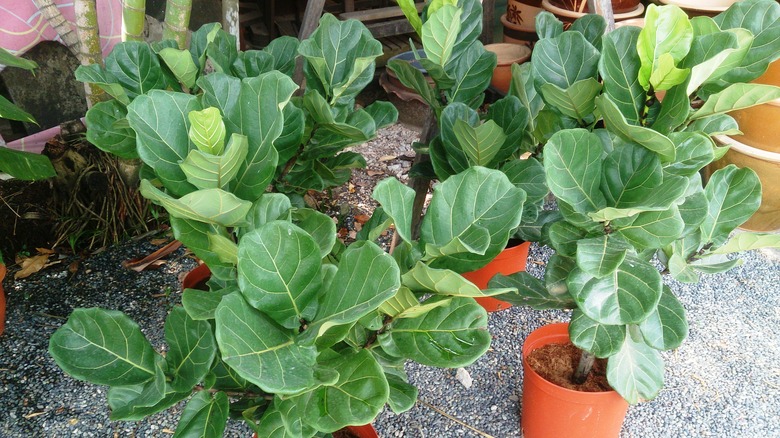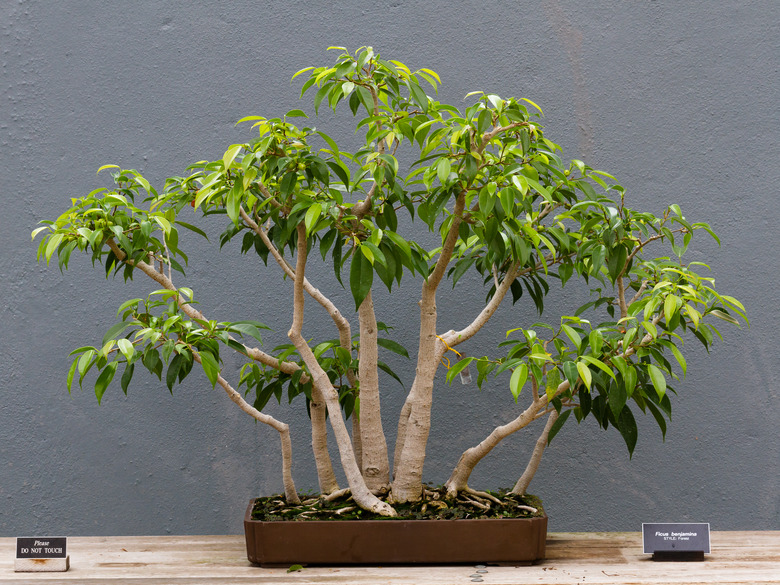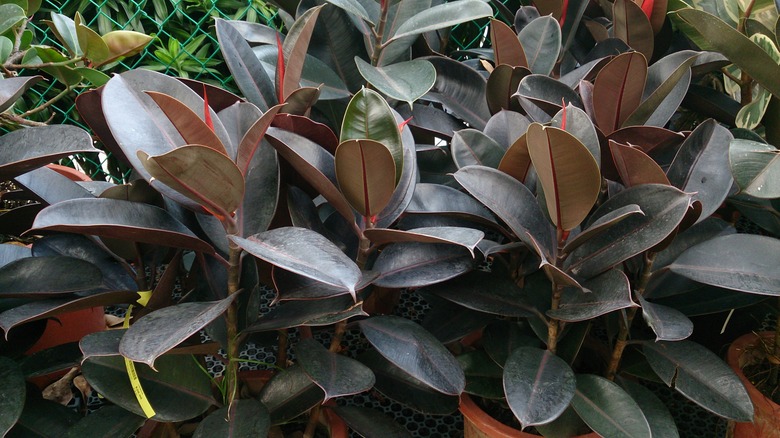How To Care For Outdoor Potted Ficus Trees
Ficus trees are generally grown in pots indoors, but if you are growing ficus as an outdoor potted tree, you need to live in a very warm climate—because most ficus trees prefer to bask in the warmth of USDA plant hardiness zones 10 to 12.
In addition, any plant grown in a pot requires more warmth than one in the ground, so the official hardiness zone of a ficus is not specifically relevant for container-grown plants.
Common Ficus Plants
The most commonly grown ficus trees are the weeping fig (Ficus benjamina), the rubber plant (F. elastica) and the fiddle-leaf fig (F. lyrata), all of which grow in zones 10 to 12.
Warning
All common ficus trees are toxic to varying degrees to cats, dogs and horses, but the fiddle-leaf fig is also toxic to humans when they ingest it or come in contact with its sap.
- The weeping fig is an extremely large tree when grown in the landscape; in Hawaii, this tree can reach 100 feet with a canopy of 50 to 60 feet! Grown in a container, the trunk of the weeping fig is often trained into a braid or twisted, and dwarf forms are used in bonsai.
- The rubber plant has characteristic, shiny, large and somewhat leathery leaves and can grow enormous in the wild—up to almost 200 feet high—but when confined to a pot, it can be whatever size you prune it to.
- The fiddle-leaf fig is also a very large tree in its native habitat, growing 60 to 100 feet tall, but as a potted plant, it can be maintained at a petite size of 2 feet to 10 feet, depending on your requirements. Its leaves are large, sometimes up to 18 inches long, and the stems can leak a milky sap that can irritate the skin.
How to Care for a Ficus Tree in a Pot
Container-grown plants require more care than those planted directly in the landscape, but the most important thing to know is that a plant grown in a container requires temperatures two zones warmer than those in the ground.
For ficus, this means that you can overwinter ficus outside only in zone 12, which describes very few areas in the U.S. You can, however, bring the pot inside during the colder months, which most gardeners need to do.
Whether the ficus is inside or out, it requires the same basic care.
Tip
Container-grown plants require more warmth than plants growing in the ground—typically, two warmer growing zones than landscape plants.
Environmental Requirements
As an indoor plant, ficus can tolerate low light conditions, being capable of growing in indirect light or partial shade. As with most plants, it requires well-draining soil and a neutral or somewhat acidic pH.
In all cases, it requires temps above 55°F, so when your area anticipates a dip in temperature, protect the ficus by covering it or bringing it indoors. Even moisture is important because too much or too little water can result in leaf drop.
Here are some specifics for these ficus varieties:
- **Fiddle-leaf fig:** This ficus prefers indirect light, as too much sun can result in leaf scorch. Temperatures are also important, as brown spots on the leaves can occur if the temperature fluctuates much.
- **Rubber plant:** This plant can handle full sun but prefers partial sun. Among the ficuses, this variety likes occasionally dry soil, so be particularly careful to avoid overwatering. The rubber plant's stem is not as woody as some other species, so it will likely need support if allowed to grow on the tall side.
- **Weeping fig:** The weeping fig likes bright, indirect sun but can handle shade; most of all, it doesn't like changes in available light. For example, if it has been maintained in a bright location and then is moved to a location with less light, it may lose its leaves while it acclimates to the new light conditions.
Fertilization
Ficus trees need little fertilizer but can benefit from a balanced, liquid fertilizer during the growing season, applied according to the product label.
Ficus Tree Care When Overwintering Indoors
Winter is coming, and you have brought your ficus indoors to weather the storms with you. This is a time of rest and low growth for your ficus, so let the soil dry out somewhat between waterings to discourage a flush of new growth. In particular, make sure your plant is not waterlogged with its roots sitting in a dish of water.
Don't fertilize during the winter months. Monitor the undersides of the ficus leaves for pests such as scale, aphids, thrips or spider mites. In most cases, you can wipe these off. You can also carefully wipe the tops of leaves to get rid of dust and help the plant breathe better.
When you know the outdoor temps are no colder than 55°F, you can take the ficus outside again—but continue to prune it for size and shape if you expect to bring it back indoors next winter.


